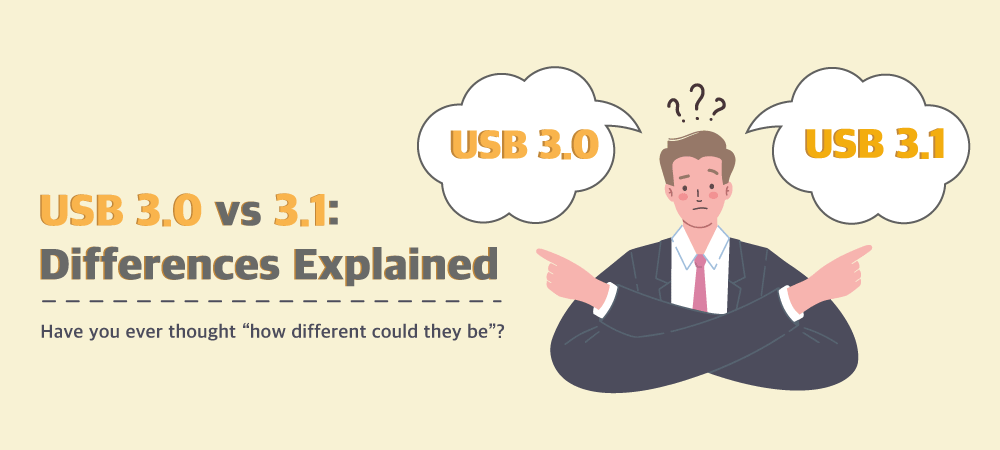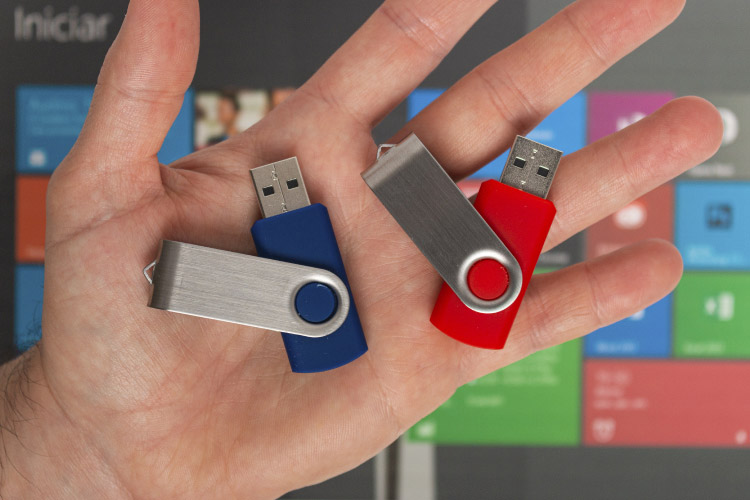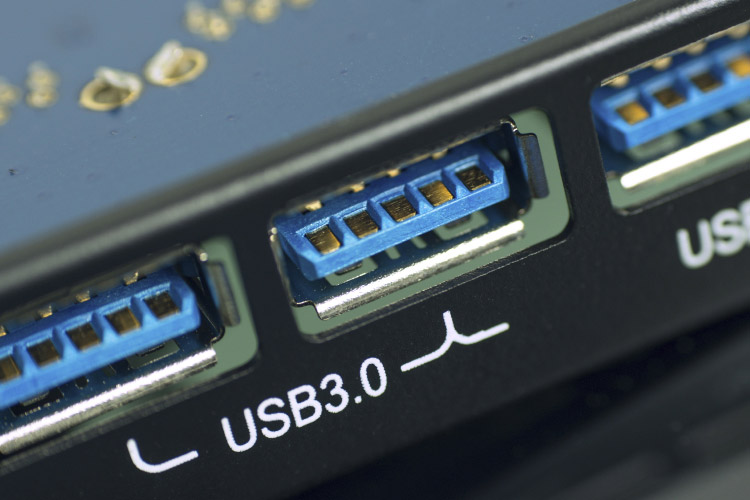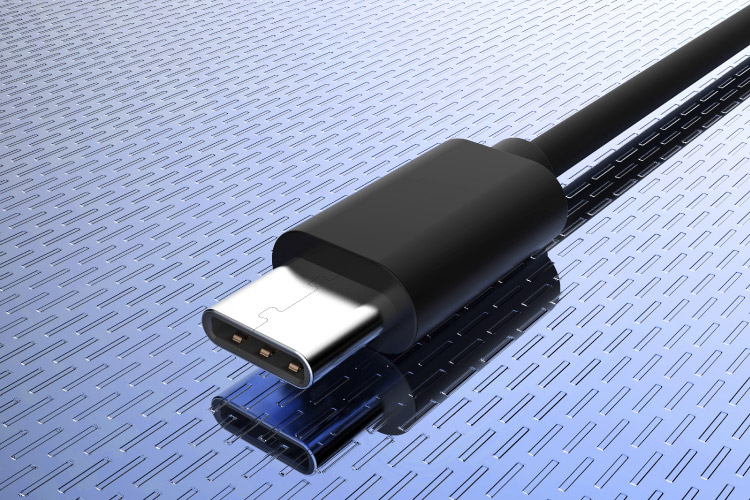
USB 3.0 vs. 3.1: Differences Explained
USB technology has been
a low-key MVP of the digital world for a long time. It helps us store and
transfer files, as well as ensures that all of our technologies integrate with
each other. As with most important technologies, the USB standard receives
periodic updates like USB 3.0.
If you've looked at buying computers or custom flash drives lately, you might have wondered: What's the difference between USB 3.0 vs. 3.1, anyway? Are the two compatible, and do I need to upgrade my devices? Don't worry - we've got the full story in our guide to USB 3.0 vs. 3.1!

Source
What Is USB 3.0?
The USB 3.0 standard, also known as USB SuperSpeed, is an update to the USB standard. USB-IF released USB 3.0 in 2008 to keep up with the demands of emerging technologies. USB 3.0's SuperSpeed transfer technology gives it a transfer speed of up to 5 gbps. It also introduced a snazzy blue port design to distinguish it from the earlier USB 2.0 standard.
USB 3.0 quickly became a must-have for ultra-fast data transfers. Fortunately, it's also backward compatible with earlier generations of the standard like USB 2.0. Speaking of USB 2.0, it's important to note that they are far from obsolete. In fact, it's still the standard for most USB flash drives and peripherals.
What Is USB 3.1, and Why Does It Have So Many Names?
In 2013, USB-IF introduced USB 3.1, with another speed upgrade to a maximum of 10 gbps. With this upgrade came a new naming practice for USB generations.
Each previous generation's naming is now retroactively updated to match the new name. That's how USB 3.0 became USB 3.1 Gen 1, and USB 3.1 became USB 3.1 Gen 2. These names were updated again with the release of USB 3.2 in 2017.
If you're thinking "Wow, these standards have more identities than the average secret agent," you're not wrong. To clear things up, here's the current official nomenclature for every USB 3.0 generation:
- The standard originally known as USB 3.0 is now known as USB 3.2 Gen 1.
- Max Speed: 5 gbps
- The standard originally known as USB 3.1 is now known as USB 3.2 Gen 2.
- Max Speed: 10 gbps
- The new USB 3.2 standard is now known as USB 3.2 Gen 2x2.
- Max Speed: 20 gbps (split between two 10 gbps lanes)
We'll talk more about Gen 2x2 in a minute and how it's different. First, let's clear up the USB 3.0 vs USB 3.1 question once and for all.
Explore Our Awesome Prices on Bulk USB Drives

Source
USB 3.0 vs. USB 3.1: What's the Difference?
Most users won't notice the difference between USB 3.0 and USB 3.1. Both are fast - so fast, in fact, that the average user will rarely hit the speed maximum of either one. For typical home and office uses like bulk USB drives, even USB 2.0 is still perfectly serviceable.
However, sometimes a few
extra gigs of speed really does make a difference. It can be especially
important for media professionals like photographers, videographers and graphic
designers who often need to transfer large files. In such cases, USB 3.1 might
be the right choice.
Like 3.0, USB 3.1 is also backward compatible. Thus, for example, you don't have to worry about compatibility between a USB 3.0 flash drive and a computer that supports USB 3.1. Do be aware, however, that a USB connection will always move at the speed of its slowest component.
USB 3.2 and Beyond
So, what's the deal with USB 3.2? This standard, which debuted in 2017, is the first USB standard to use USB-C connectors exclusively. (Read up on the differences between USB-A vs. USB-C here.)
Thanks to the improved capabilities of USB-C, USB 3.2 offers another big speed boost. This time, it uses two 10 gbps "lanes" that operate simultaneously, providing a total speed of up to 20 gbps. If you're ready to make the jump to USB-C and you need hyper-speed performance, USB 3.2 could be a good choice.
Furthermore, the USB 4 standard is already out, and its specs are pretty wild. We're talking 40 gbps maximum speeds! However, it'll be some time before we see it implemented widely, so there's no need to seek out a USB 4 flash drive just yet.
Custom Flash Drives That Bring Your Ideas to Life!

Source
USB Memory Direct offers flash drives with both USB 3.0 and USB 3.1 capabilities. Our KO Dual Type USB Drive is a perfect example, featuring a USB 3.0 USB-A connector on one side and a USB 3.1 USB-C connector on the other.